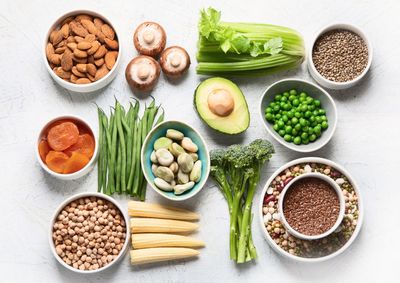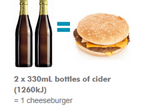Plants put the brakes on ageing
by Guest Author,
- March 8, 2022
- Leave a comment
Mia Evans, student dietitian Curtin University
Every year, over $40 billion world-wide is spent on fighting the signs of ageing (for the record, LiveLighter's top anti-ageing product recommendation is... sun protection).
Eating to age healthily may not fight greys or rid you of your ‘smile-lines’ but it can help delay declines in strength and energy levels, and reduce the risk of developing a chronic disease. Featuring the right foods can fuel our cells to fend off inflammation linked to ageing, and keep us fit and on our feet for longer.
What diet pattern to follow?
Many foods that have been shown to help prevent chronic disease can also keep you carrying the shopping, boost your balance, improve your mood and protect against sickness. Following The Australian Dietary Guidelines, a Mediterranean dietary pattern, or a combination of both has been linked with reduced effects of ageing and improved long-term health. What’s their secret? They are both very high in plant foods, and very low in highly processed junk foods.

Both eating styles emphasise the following foods;
-
Fruits, vegetables and legumes:
These are plant foods that are cheap and chock full of fibre, vitamins and minerals to reduce the impact of inflammation and keep us full and satisfied between meals. Any unprocessed options in this category are great, but you can supplement your fibre intake significantly by selecting plant produce that still has the skin on when you sink your teeth in.
-
Proteins and healthy fats:
Both eating styles promote oily fish such as salmon, tuna and sardines, and reduced-fat dairy foods as the go-to protein options. These two diet types also recommend moderate amounts of healthy fats from plant sources, like olive oil, seeds and nuts such as walnuts and almonds.
-
Wholegrains:
The plants in your pantry power your muscles and keep your gut healthy and regular. Wholegrain or multi-grain varieties of bread, wraps, pasta, rice, cereals and crackers are excellent for fibre and the vitamins and minerals that fend off inflammation.
-
Foods to limit:
Foods high in saturated fats and sugars are ‘sometimes foods’ because they cause inflammation and trigger further damage to our body systems on top of the normal ageing process. This can also trigger nutrient malabsorption, because when the cells of our small intestine are busy fighting off inflammation they miss the opportunity to absorb important nutrients passing through. Diets higher in saturated fat and sugars are also linked with the development of type 2 diabetes, obesity, heart disease and 13 types of cancer.
Nutrient-dense plants
These plant-based dietary patterns focus on nutrient dense foods; in other words, foods that give you more bang for your buck. Choosing nutrient dense foods as we age is extremely important because some micronutrient (vitamin and mineral) requirements increase with age, while energy (kilojoule) requirements decrease with age if we start to move less.

If you need further convincing, a study of older Australians found that those who closely followed the Australian Dietary Guidelines were 58% more likely to experience ‘successful’ ageing compared with those who weren’t following the guidelines. The researchers included measures of cognitive function, independence and mental and physical health in their definition of ‘successful’ ageing.
Eating plenty of plant-foods and less packaged food (most of the time) will ensure you’re topped up with the nutrients to delay ageing with gusto. Healthy ageing is multifactorial, but what you eat plays a big role in helping to make it as graceful as possible.
LiveLighter supports future health professionals through engagement with Australian Universities. This student blog was created for LiveLighter as part of Advanced Public Health Nutrition Practice coursework (Master of Dietetics at Curtin University, Western Australia).







